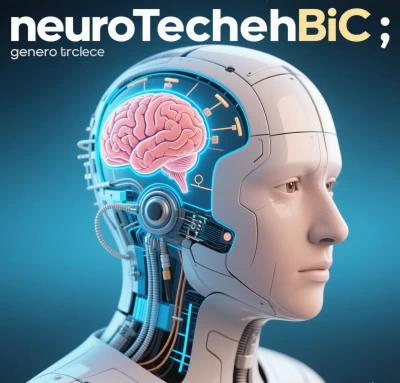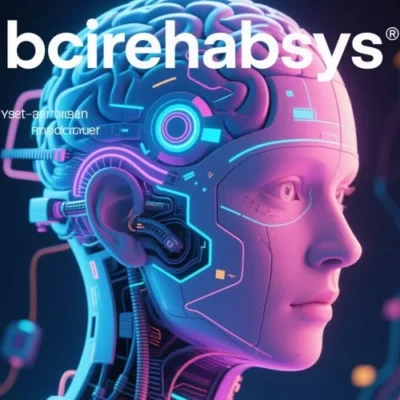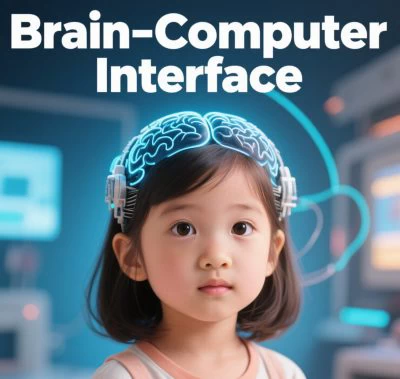
1. Core Definition and Foundational Principles
BCIRehabSys (Brain-Computer Interface Rehabilitation System) is an integrated neuroengineering platform that establishes bidirectional communication between the brain and external devices to restore lost neurological functions. It combines non-invasive neural signal acquisition (e.g., EEG, fNIRS), real-time AI-driven decoding algorithms, and multimodal feedback mechanisms (e.g., functional electrical stimulation, robotic exoskeletons, VR environments) to create closed-loop therapeutic interventions for neurological disorders. Unlike passive rehabilitation tools, BCIRehabSys actively leverages neuroplasticity by translating patients’ intentional motor imagery into executed movements, thereby “rewiring” damaged neural pathways (#user-content-1)(#user-content-4)(#user-content-15).
Suggested Figure 1: BCIRehabSys Architecture
- Top: Patient with EEG cap generating motor imagery signals.
- Middle: AI algorithm decoding neural patterns into control commands.
- Bottom: Robotic exoskeleton executing movement with haptic feedback.
(Color scheme: Brain signals = blue, AI processor = gold, Feedback actuators = green)
2. Key Technological Components
A. Neural Signal Acquisition
- Non-invasive Sensors: High-density EEG caps capture cortical activity associated with motor intention (e.g., sensorimotor rhythms during hand grasping imagery) (#user-content-8)(#user-content-14).
- Hybrid Systems: Integration of EEG with fNIRS or EMG enhances signal specificity for complex tasks (#user-content-9)(#user-content-12).
B. AI-Decoding Engine
- Adaptive Algorithms: Machine learning classifiers (e.g., SVM, deep neural networks) translate EEG patterns into movement commands with >85% accuracy (#user-content-5)(#user-content-17).
- Bidirectional Feedback: Real-time performance data adjusts stimulation parameters (e.g., FES intensity) based on neural engagement levels (#user-content-9)(#user-content-15).
C. Actuation Modalities
| Feedback Type | Function | Clinical Impact |
|---|---|---|
| Robotic Exoskeletons | Execute limb movements triggered by motor imagery | Restores gait in spinal cord injury (#user-content-10) |
| Functional Electrical Stimulation (FES) | Induces muscle contractions | Reanimates paralyzed limbs post-stroke (#user-content-4)(#user-content-15) |
| Virtual Reality (VR) | Provides immersive motor task simulations | Enhances engagement and cortical activation (#user-content-5)(#user-content-17) |
Suggested Figure 2: Closed-Loop Rehabilitation Mechanism
EEG → AI Decoder → FES/Robotic actuation → Sensory feedback → Neuroplasticity reinforcement.
3. Functional Classification
BCIRehabSys operates in two complementary modes:
- Assistive Mode: Replaces lost functions (e.g., controlling wheelchairs or communication devices via thought) for daily independence (#user-content-4)(#user-content-16).
- Rehabilitative Mode: Induces neuroplasticity through repetitive “intention-action-reward” cycles, restoring motor/cognitive abilities (#user-content-3)(#user-content-7).
Example: Post-stroke patients using rehabilitative mode showed 15–20% improvement in Fugl-Meyer scores after 20 sessions (#user-content-15)(#user-content-17).
4. Clinical Applications and Efficacy
A. Stroke Rehabilitation
- Upper Limb Recovery: BCI-guided FES improved hand function in 75% of chronic stroke patients by normalizing interhemispheric asymmetry (#user-content-7)(#user-content-13).
- Gait Rehabilitation: EEG-triggered exoskeletons increased walking speed by 30% in hemiparetic patients (#user-content-10)(#user-content-14).
B. Spinal Cord Injury (SCI)
- Brain-Spine Interface (BSI): Decoded motor cortex signals bypass lesions to stimulate epidural electrodes, enabling paralyzed patients to stand (#user-content-10).
C. Neurodegenerative Diseases
- Parkinson’s: Beta-band oscillation modulation reduces tremors and improves movement initiation (#user-content-3)(#user-content-16).
Suggested Figure 3: fMRI Evidence of Neuroplasticity
Increased activation in ipsilesional motor cortex after BCIRehabSys training (pre- vs. post-therapy).
5. Advantages Over Conventional Therapy
| Parameter | BCIRehabSys | Traditional Therapy |
|---|---|---|
| Neuroplasticity Induction | Real-time “intention-action” coupling | Passive movement repetition |
| Personalization | AI adapts to individual brain patterns | Standardized protocols |
| Engagement | Gamified VR tasks boost adherence | Repetitive exercises reduce motivation |
| Remote Monitoring | Tele-rehabilitation with clinician oversight | In-clinic only (#user-content-2)(#user-content-6) |
6. Future Innovations
- AI-Optimized Protocols: Reinforcement learning personalizes training difficulty based on neural biomarkers (e.g., ERD/ERS power) (#user-content-9)(#user-content-12).
- Wearable Hybrid BCIs: Dry EEG electrodes + AR glasses for home-based rehabilitation (#user-content-12)(#user-content-16).
- Neural Stem Cell Integration: BCI-guided electrical stimulation enhances transplanted cell survival in SCI (#user-content-10).
- Cost Reduction: Modular designs cut annual rehabilitation costs by $6,000/patient (#user-content-5)].
Suggested Figure 4: Next-Gen BCIRehabSys Prototype
Wireless EEG headset paired with AR glasses and soft robotic gloves.
Conclusion
BCIRehabSys represents a paradigm shift in neurorehabilitation by transforming neural intention into therapeutic action. Its core innovation lies in closing the loop between:
- Brain decoding (capturing motor imagery via EEG)
- Actuation (robotics/FES executing movement)
- Neurofeedback (reinforcing correct patterns via VR/ haptics)
With proven efficacy in stroke, SCI, and neurodegenerative diseases, it transcends symptomatic management to enable functional recovery. As AI and sensor technologies mature, BCIRehabSys will democratize precision neurorestoration—moving from clinics to homes and expanding access globally.
Data Source: Publicly available references.
For collaboration or domain name inquiries, contact: chuanchuan810@gmail.com.




